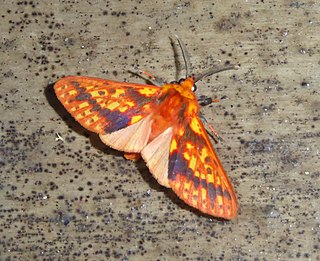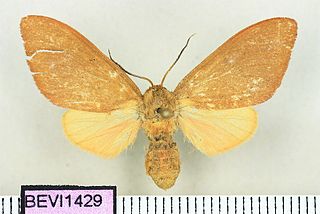
Symphlebia is a genus of moths in the family Erebidae. The genus was erected by Felder in 1874.

Symphlebia costaricensis is a moth of the subfamily Arctiinae first described by Rothschild in 1909. It is found in Costa Rica and Guatemala.
Symphlebia haxairei is a moth of the family Erebidae first described by Hervé de Toulgoët in 1988. It is found in Venezuela.
Symphlebia alinda is a moth in the family Erebidae. It was described by Harrison Gray Dyar Jr. in 1909. It is found in Mexico.
Symphlebia aryllis is a moth in the subfamily Arctiinae. It was described by William Schaus in 1896. It is found in Venezuela.
Symphlebia catenata is a moth in the family Erebidae. It was described by William Schaus in 1905. It is found in Brazil and French Guiana.
Symphlebia citraria is a moth in the family Erebidae. It was described by Paul Dognin in 1889. It is found in Ecuador, Venezuela and Peru.
Symphlebia favillacea is a moth in the family Erebidae first described by Walter Rothschild in 1909. It is found in Suriname and French Guiana.
Symphlebia foliosa is a moth in the subfamily Arctiinae first described by Seitz in 1921. It is found in Bolivia.
Symphlebia herbosa is a moth in the subfamily Arctiinae first described by Schaus in 1910. It is found in Costa Rica.
Symphlebia jamaicensis is a moth in the subfamily Arctiinae. It was described by Schaus in 1896. It is found on Jamaica.
Symphlebia lophocampoides is a moth in the subfamily Arctiinae. It was described by Felder and Rogenhofer in 1874. It is found in Brazil.

Symphlebia nigropunctata is a moth in the subfamily Arctiinae. It was described by Reich in 1935. It is found in Brazil.
Symphlebia panema is a moth in the subfamily Arctiinae. It was described by Paul Dognin in 1923. It is found in Brazil.
Symphlebia similis is a moth in the subfamily Arctiinae. It was described by Rothschild in 1917. It is found in Peru.
Symphlebia tessellata is a moth in the subfamily Arctiinae. It was described by Schaus in 1910. It is found in Costa Rica and Venezuela.
Symphlebia tetrodonta is a moth in the family Erebidae. It was described by Paul Dognin in 1911. It is found in Venezuela.
Symphlebia tolimensis is a moth in the family Erebidae. It was described by Walter Rothschild in 1916. It is found in Colombia.
Symphlebia underwoodi is a moth in the subfamily Arctiinae. It was described by Rothschild in 1910. It is found in Costa Rica and Honduras.
Symphlebia venusta is a moth in the subfamily Arctiinae. It was described by Paul Dognin in 1921. It is found in Peru and Bolivia.

